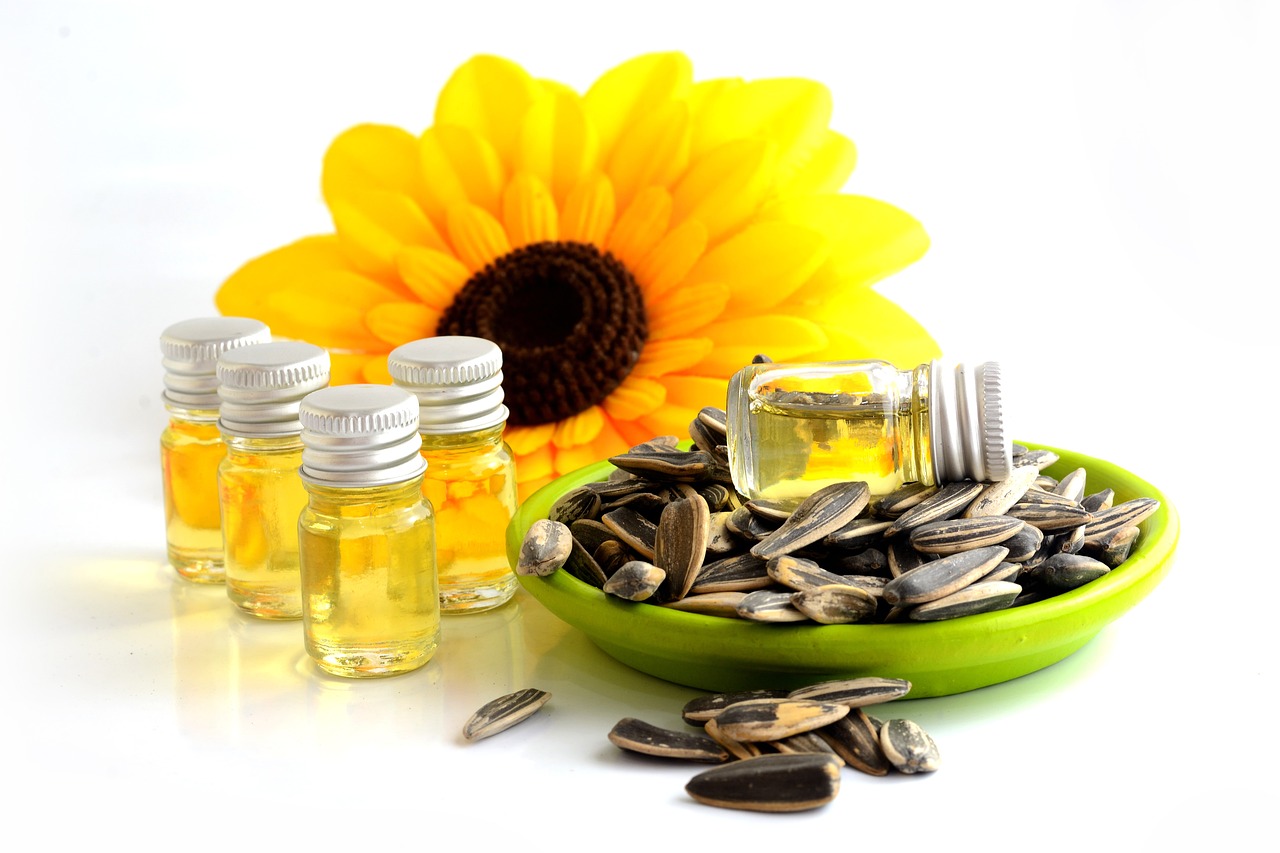You probably know sunflower oil mainly as a cheap and versatile cooking oil. But what’s it doing in cosmetics? And is it healthy at all?
Sunflower oil is one of the most popular cooking oils in the world. You can buy the oil, which is extracted from the seeds of sunflowers, in a virgin or refined variety.
Virgin sunflower oil is cold-pressed and not further processed after pressing. It is light yellow and tastes nutty. On the other hand, refined sunflower oil is purified of colorants and bitter substances, among other things, after it has been extracted. Therefore, it tastes more neutral and has a paler color. The ingredients of sunflower oil are best preserved when it is cold-pressed and then not further treated.
The ingredients of sunflower oil and their effect
Sunflower oil consists mainly of monounsaturated and polyunsaturated fatty acids. The most important are omega-6 fatty acids, linoleic acid, and omega-9 monounsaturated fatty acids, oleic acid. How much sunflower oil contains these two fatty acids depends on whether it is “normal” or “high-oleic” sunflower oil. The latter is produced from a unique variety of sunflowers whose seeds contain exceptionally high levels of oleic acid.
Here is an overview of the most essential ingredients:
Linoleic acid: Sunflower oil contains about 48 to 74 percent of this omega-6 fatty acid (high oleic: two to 17 percent). Linoleic acid is one of the essential fatty acids that our body cannot produce itself. It needs it, among other things, to produce other fatty acids and for healthy skin. However, it would help if you did not consume too much of this fatty acid because omega-6 fatty acids inhibit the function of omega-3 fatty acids in the body. A good ratio of omega-6 to omega-3 is between five to one and two to one, according to a 2008 study. Unfortunately, sunflower oil contains hardly any omega-3 fatty acids. You’ll likely get them from canola, flax oils, walnuts, and fatty seafood.
Oleic acid: Sunflower oil contains between 14 and 39 percent of this monounsaturated omega-9 fatty acid; with high-oleic sunflower oil, the proportion is logically higher; up to 92 percent can be achieved. According to one study, oleic acid reduces insulin resistance in diabetes patients. Another study concluded that oleic acid strengthens the immune system and has an anti-inflammatory effect on the body.
Vitamin E: This is where sunflower oil scores. At about 40 to 70 milligrams per hundred grams, it contains significantly more vitamin E than canola or olive oil. Vitamin E is an antioxidant that protects our cells from the harmful attacks of so-called free radicals. In addition, our body needs vitamin E for fat metabolism and healthy skin.
Cold-pressed, virgin sunflower oil can be used for dressings or dips with a nutty taste. However, it would be best not to heat it to high temperatures unless it is high-oleic sunflower oil rich in oleic acid. This is very well suited for frying.
Refined sunflower oil can also be heated to high temperatures, although olive and rapeseed oil frying properties are better. Since refined sunflower oil tastes neutral, it goes well with most dishes in terms of taste. According to Stiftung Warentest, however, refined sunflower oils can contain unhealthy trans fats.
Since sunflower oil contains a lot of linoleic acid and vitamin E, it positively affects the skin. According to one study, it helps heal wounds, has an antibacterial effect and helps the skin regenerate.
Because of these favourable properties, you can find sunflower oil in many skin care products, but you can also use virgin sunflower oil to rub into your skin. This way, you save money and packaging and know exactly which substances go on your skin. Sunflower oil can have similar positive effects on your hair if you use it as a hair treatment. Such an oil treatment also helps against a dry scalp.
Because of its mild taste, you can also use sunflower oil for oil pulling.
- source: Sonnenblumenöl: Gesundheit, Anwendung und Wirkung – Utopia.de/picture: Bild von Prakasit Khuansuwan auf Pixabay
This post has already been read 2692 times!



